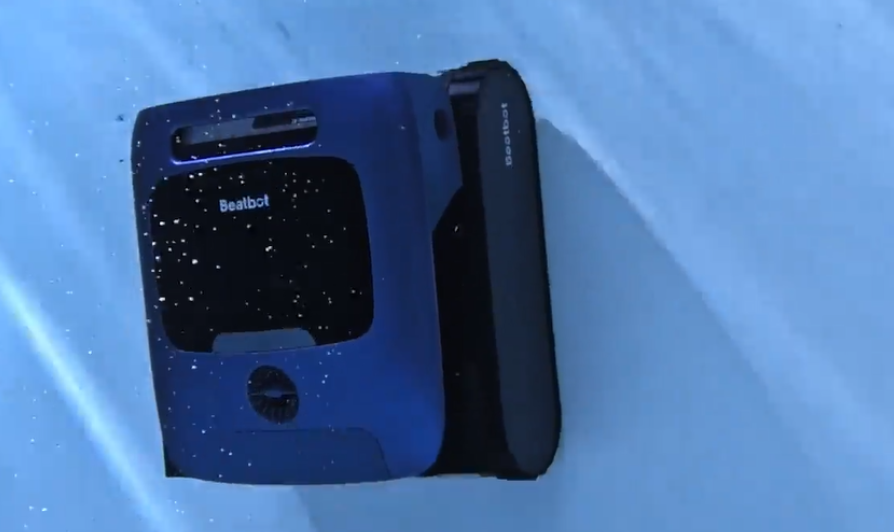For optimal results from your robot pool cleaner, your pool water needs to be in a state of perfect chemical balance. No matter what type of pool cleaner you are using, whether this is a pool vacuum, pool skimmer or a new pool robot the water in the pool needs to be clean for the safety of swimmers and to ensure the equipment runs at the best level. Using the right chemicals is one of the greatest factors in the care of a pool, and it all begins with the core three.
Pool Chemistry and Robotic Pool Cleaners – Why It Matters
So, clean water is, by definition, not just without debris. Proper pool chemistry stops algae growth, prevents corrosion and increases energy efficiency. Even the best pool cleaner robot, whether that be a pool wall cleaner or an automatic swimming pool cleaner, can’t deal with chemically imbalanced water.
That’s the reason why combining quality tools — like a vacuum cleaner for pool or pool vacuum robot — with the right chemical treatment is a must.
The Three Essential Chemicals for Your Swimming Pool
Here we breakdown the three most important chemicals you should be using for maintaining your pool.
Chlorine
This is the primary sanitizer for your pool. Bacteria, viruses and algae, among other microorganisms are de-activated by chlorine. Just to reiterate, if you use chlorine tablets, liquid chlorine, or ANY sort of saltwater chlorinator, all you need to do is keep the free (combined) chlorine level between 1-3 ppm your pool will be safe. Like the other models, the robot pool is most effective in clean water, in which its sensors and scrubbers aren’t blocked with algae or other organic material.
pH Adjusters
PH balance indicates how acidic or basic your water is. Optimal is 7.4-7.6. When pH levels are not balanced, chemicals such as chlorine don’t work properly, you may have scale build up or your pool may become surfaces corroded or pitted (which also tackle your maytronics pool cleaner, Beatbot or whatever model you use). You can modify pH with soda ash (to increase), or the muriatic acid (to decrease).
Alkalinity Increasers
Total alkalinity serves as a pH buffer. If alkalinity is too low then pH balance will waver, negatively impacting water health and equipment performance. Alkalinity can be increased with baking soda. Well balanced alkalinity will prevent ph and chlorine levels from going crazy and will allow your pool vacuum for algae or robotic pool cleaner to work most effectively.
Here’s How Chemical Balance Benefits Robot Cleaners
For your robot pool cleaner to work its best, it requires the right balanced water. Bad chemistry can lead to cloudy water, dirt buildup, or algae blooms — each of which can clog filters, diminish suction, or harm internal systems. Guys like the Beatbot AquaSense 2 Ultra, Beatbot AquaSense 2 Pro, and Beatbot AquaSense 2 use sensors and smart pathing that are most effective in clean clear water.
Keeping It Clean and Smart: Tools to Keep Water Clean
Don’t rely on chemicals alone. Pair them with the proper cleaning accessories:
Take a pool vacuum robot to bottom debris.
Put in a skimmer so you can skim off the surface debris before it has a chance to sink.
Use a pool Robotic pool cleaner to miss nothing.
Find out how to acid wash a pool if your pool surfaces become stained or algae-ridden.
Learn how to drain an inground pool without a pump if you only need to do so for a deep clean or chemical reset.
If you find the algae keeps coming back, you may need to check your chlorine levels and/or invest in a robot pool cleaner that is rated for algae pick up. For instance, many ask: can a pool robot remove algae? And the answer is yes, if your chemistry is there for it.
Don’t forget about your pool booster pump.Pool Booster Pump serve the purpose to increase the water pressure in your pool, so you can simply put the booster pump into your inlet of your pool cleaner to get the optimal performance.
There’s no doubt that chemistry and robotic cleaners do the bulk of the work, but you play a critical part in circulating water and maintaining necessary pressure for attached cleaners or waterfalls with your pool booster pump. Balanced chemicals also add life to such parts.
Conclusion: Robotic Pool Cleaner Success is All in the Chemistry
Learn the three main chemicals (chlorine, pH adjusters, and alkalinity increasers) If you want to seriously get the most out of your robot pool cleaner, it’s crucial to understand the three primary chemicals. In terms of the beatbot’s use, it works optimally in a balanced water with much less friction and full contact.
Regular water testing and occasional cleaning by a pool vacuum, skimmer, and a pool cleaning robot will help you keep your pool sparkling fresh all season long.

